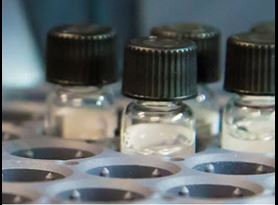ICPMS-Based Multiplex Bioassays: An Effective, Emerging Platform
Inductively coupled plasma mass spectrometry (ICP-MS) is one of the most versatile tools available for elemental quantitation, given the instrument’s sensitivity to trace level elements and low limits of detection, as well as its linear dynamic range and facilitation of multiplex assays.
Although the chemical or structural form of an analyte cannot be determined by ICP-MS alone, when coupled with a separation technique (typically chromatographic separation), hyphenated ICP-MS is an exceptional detector for chromatography. The use of ICP-MS as a detector in hyphenated applications offers many benefits, including elemental selectivity, the ability to generate isotopic information, and the capability to identify multiple elements concurrently. Both total and free concentration of elements can be measured, and common applications include pharmacokinetic (PK) and pharmacodynamic (PD) studies, trace elements mass balance studies, and metabolite profiling, as well as trace elemental analysis and limits testing of elements. Typically, plasma or serum samples are used for pharmacokinetics (PK), drug clearance, half-life, and the determination of bioavailability.
Coupling ICP-MS with Chromatography: Hyphenated ICP-MS
Inductively coupled plasma mass spectrometry instrumentation can be coupled with a wide range of chromatographic systems. Hyphenated ICP-MS applications are often used to provide complementary data to LC-MS/MS. Specifically, in instances where highly abundant metabolites with low ionization efficiency is unable to be detected by LC-MS/MS, hyphenated ICP-MS can be employed, as the hyphenated system can produce sufficient data. The most commonly used applications for hyphenated ICP-MS are:
- Liquid chromatography (LC);
- High-performance liquid chromatography (HPLC);
- Reversed phase chromatography (RPC);
- Reversed phase ion pair chromatography (IPC), and
- Size exclusion chromatography (SEC).
Additionally, ICP-MS can be paired with:
- Ion exchange chromatography (IEC), and
- Normal phase chromatography (NPC).
While the above chromatographic systems are considered more conventional for coupling with inductively coupled plasma mass spectrometry, ICP-MS can also be used as a detector for separations by gas chromatography (GC). This application for molecular speciation can be particularly useful, as other element-specific detectors available for GC cannot achieve the same sensitivity, specificity, or wide range of elemental analysis. When compared to LC, GC typically offers higher resolution, resulting in some instances and/or applications where it may be beneficial to produce volatile derivatives of non-volatile compounds specifically for analysis by GC.

Figure 1. Generic hyphenated ICP-MS system
The Utility of Hyphenated ICP-MS in Bioanalysis
When ICP-MS with hyphenated techniques is employed, organic compounds, organometallic compounds, and complex biomolecules, including nucleic acids, metal-proteins, and phospholipids, can be detected by means of their elemental content. As a result, advances have been made in the study of heteroatom-tagged proteomics, and hyphenated separations with ICP-MS enable the speciation of biologically significant heteroatoms (metals and semi-metals) that are naturally associated with proteins.
The analysis of metallo-proteins – proteins that contain a metal ion cofactor – is essential to gain a full understanding of the part metals play in biological processes. Knowledge of the role of metals in biological processes is critical to the entire drug development lifecycle, and can serve to inform biomarker selection and quantification, as biomarkers are powerful tools that can be implemented across all stages of drug development, from discovery to clinical trial stratification and therapeutic drug monitoring (TDM).
ICP-MS offers distinct advantages for biomolecule analysis, as specifically targeted standards are not needed to obtain absolute amounts of biomolecules in complex sample matrices, given the hard ionization source of the instrument. Furthermore, while the absolute determination of proteins has long presented a challenge, when isotope-dilution analysis (IDA) is employed in conjunction with the use of stable isotopes as non-radioactive tags for biomarkers, ICP-MS can accurately deliver biomolecule quantification. Additionally, the hyphenated application can be employed as an alternative detection technique for immunoassays.
When developing highly sensitive analytical methods to detect elements in biological matrices, optimal conditions and criteria should be met for:
- Accuracy;
- Specificity;
- Robustness;
- Precision;
- Detection and quantitation limit;
- Linearity, and
- Range.
The US Food and Drug Administration (FDA) Bioanalytical Method Validation Guidelines for Industry should be followed when such analytical methods are validated.
Partnering with Element for Hyphenated ICP-MS Analysis
Hyphenated ICP-MS methodology facilitates a greater understanding of impurities and potential metabolites, in addition to providing quantitative information regarding the drug itself, thereby ensuring and improving product safety, efficacy, and quality. We have a proven track record of successfully developing and validating optimal methods for complex and challenging large and small molecule samples, employing a wide range of hyphenated ICPMS methodology, coupled with individualized sample preparation methods, including microwave digestion. Our consultative, knowledgeable teams can design accurate multiplexed quantification for a wide range of applications, including high-throughput biomarker screening and quantification. Connect with a scientist today to discuss whether hyphenated ICP-MS methodology is the right approach for your needs.
Find related Resources
Learn more

Chemistry, Manufacturing, and Controls (CMC) Consulting Services
We provide consulting services for Chemistry, Manufacturing, and Controls (CMC) product development in the pharmaceutical and biotechnological industries.

CMC Product Development Services
Our CMC product development services include formulation development, parenteral and topical product development, microbiology testing services, and consultancy.

DMPK & ADME Services
Element offers a wide range of ADME and DMPK laboratory services, and we can accept both in vivo and in vitro samples.
Sign Up for Free Resources
Visit Element's email subscription center to receive the latest industry news, technical whitepapers, case studies, webinars, and upcoming events.
